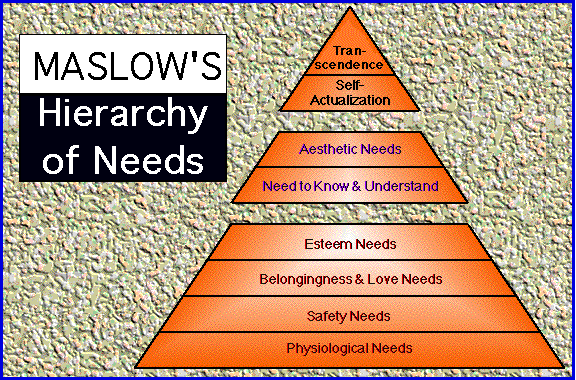If you are the parent of a third or fourth grade student you know that this week marks the beginning of PARCC testing. If your kiddos are a bit younger, you may be hearing a lot of talk about PARCC testing in the community and in the media. Whether you are new to the PARCC conversation or have been involved for a long time, it is important that you understand why we are working with the PARCC assessment and where we stand as a professionals with this new standardized test.
Background and Context
In 1993 the Massachusetts legislature enacted an aggressive educational reform agenda. One major outcome of this legislation was the implementation of the Massachusetts Comprehensive Assessment System (MCAS). MCAS was intended to measure the overall efficacy of schools, districts, and the state in ensuring that all students had access to and were mastering the skills and concepts spelled out in the Massachusetts Curriculum Frameworks.
Just a few years after MCAS was implemented in Massachusetts, the federal government signed the No Child Left Behind Act (NCLB). In 2001, this law brought with it a considerable focus on holding public schools accountable by measuring student learning using standardized testing results. The accountability movement achieved the desired outcome of focusing schools on student achievement and using data to make strategic decisions about how to best meet the needs of a diverse student population. Unfortunately, the accountability movement achieved a number of unintended outcomes.
The accountability systems outlined in NCLB detailed serious consequences should a school not achieve at the performance targets spelled out in the law. The penalties associated with “failure” pushed schools to focus narrowly on tested curriculum and caused a high degree of anxiety amongst professionals at all levels of the public education sector. Sadly, this focus on testing and the related anxiety spilled over to families, students, and communities.
As the accountability movement gained momentum in the years following the implementation of NCLB, the tumult and debate over test scores and the performance of public schools continued. In 2008 the federal government made its latest attempt to bring about sweeping educational reform. This time the reform did not come in the form of law but in a competitive grant program known as Race to the Top (RTTT).
RTTT provided states with an opportunity to apply for grants using twenty-eight criteria to judge applications. Grant winners would share in the $4.35 billion encapsulated in RTTT. Four of those criteria focused on standards and assessment. In order to score points states had to submit plans that committed to “developing and implementing high quality assessments.” These federal grant criteria are the fuel behind the Common Core State Standards (CCSS) and PARCC.
One of the primary criticisms of MCAS has been and continues to be that it tests low level thinking and comprehension skills. In its current format, the MCAS assessments do not provide insight into the critical thinking and problem solving skills that are so critical to life in the twenty-first century. PARCC assessments were designed to enhance MCAS like assessments by creating testing scenarios that provided those insights into higher order thinking and problem solving skills while maintaining the standardize testing regiment necessary for school accountability purposes. Time and experience will allow professionals to judge whether the PARCC assessment meets that need and achieves its intended outcome.
What are the next steps for PARCC at Ben-Hem?
PARCC is a new standardized testing measure. As such, the test developer (Pearson) and the Massachusetts Department of Elementary and Secondary Education (DESE) need to calibrate the tests to make sure that they assess the skills and concepts that they are intended to measure and that the skills and concepts are grade level appropriate. Because of the need to tune these assessments, the results, in essence, don’t count this year. You might hear educators say things like, “… we are being held-harmless this year.” When they say this they are referring to the fact that the testing results will not count for school accountability measures.
Beyond the fine tuning of the test, there are also a huge number of technical, staff training, and student preparation elements that we are working out. The PARCC tests will be taken on iPads using an application developed by Pearson called TestNav. Implementing computer based standardized testing on a broad scale presents a massive challenge that has taken many, many months to sort out and prepare for.
How is Ben-Hem managing PARCC testing with students?
The public discourse surrounding the CCSS and PARCC can best be described as heated and divisive. Regardless of the public debate, we are choosing to use PARCC as an opportunity to do something positive for our students and for our community.
Over the course of my career, I have heard many teachers talking about “getting kids ready for MCAS.” I have heard parents talking about the stress that their their children feel and I have seen kids get incredibly worked up about these assessments. None of these outcomes remotely resemble what we hope for our schools and our students. These are the outcomes we intend to change and I ask that parents and families join us in this worthwhile endeavor.
At school, we are taking a three pronged approach.
- We are focusing on the idea that the PARCC assessment is a test of the test. We are explaining to students that Massachusetts still isn’t sure how good the test is and that giving it to kids will let them know just how good (or bad) the test is.
- We are reinforcing the message that these tests aren’t a measure of a person’s intelligence or capacity to learn and perform. Standardized tests, no matter how good, are not exact measures of students knowledge and understanding. If a student took a standardized test on fifteen different occasions, we would expect to get fifteen different scores that fall within a range of scores that third graders normally fall into. Understanding this variability helps kids to understand that the test is not a certain measure of what they know and are able to do.
- We are moving away from “MCAS preparation.” This is the practice of dedicating teaching and learning time to taking mock tests and focusing on how to take test questions apart to get the right answers. There is no question that we have an ethical obligation to our students to ensure that they have the skills and knowledge to participate effectively in PARCC examinations. To do so we provide orientation to the online testing environment and the overall layout and format of the test. Beyond this orientation to the test and testing environment we will entrust success on any standardized test to the amazing learning opportunities that this community provides for its students and children.
Here is how you can help.
- Reiterate the messages we are sharing with kids. Kids feel more comfortable when they know that the adults in their lives are on the same page.
- If your kids mention PARCC, give your children information not opinions about the test. Help them by giving facts. There are many great resources that describe the tests and their content.
- Reinforce the idea that they should do their best work just like they do on any other school day. The only difference is that on PARCC testing days they will do their best work on an iPad.
- Relax. PARCC scores will in no way limit your child’s admission to honors courses or any other opportunities later in life. These tests are designed to give a general sense of how children are performing and what they may need in terms of instructional focus in future months and years.
There is a lot here and I understand that this is a lot of information to take in. If there are questions you have that are not answered here, please feel free to get in touch. You can reach me at ikelly@natickps.org
 Through an NEF grant, each student and staff member at Ben-Hem was able to obtain a one-year subscription to Tales2Go! Tales2Go is an award-winning kids’ mobile audio book service that streams thousands of familiar titles to mobile devices and desktops in the classroom and beyond (think Netflix for books). The benefits of listening to audio books include enhanced vocabulary, fluency and listening skills as well as the development of background knowledge. Studies show that when a listening component is added to reading instruction, student achievement increases measurably. Students are able to read at a higher level without having to decode each word on a page, and they hear modeled fluent, expressive reading.
Through an NEF grant, each student and staff member at Ben-Hem was able to obtain a one-year subscription to Tales2Go! Tales2Go is an award-winning kids’ mobile audio book service that streams thousands of familiar titles to mobile devices and desktops in the classroom and beyond (think Netflix for books). The benefits of listening to audio books include enhanced vocabulary, fluency and listening skills as well as the development of background knowledge. Studies show that when a listening component is added to reading instruction, student achievement increases measurably. Students are able to read at a higher level without having to decode each word on a page, and they hear modeled fluent, expressive reading.





